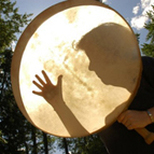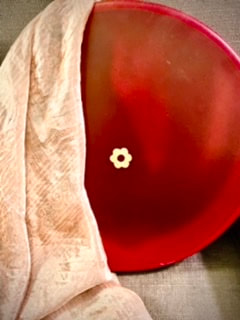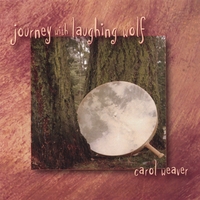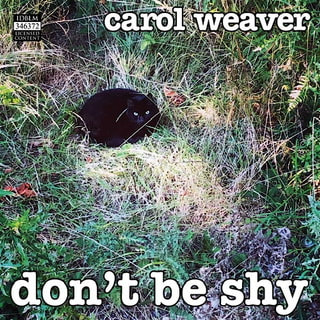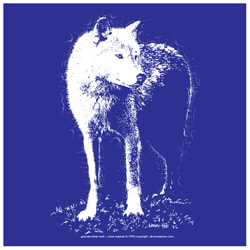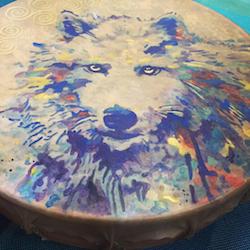|
This powerful myth/story really connects me with my true essence as woman and my life-path as lover of our sweet earth-mother... including my pacha-journey coming into sage-time....... my sisters and 'i am'.... wolf woman, la loba... the magic + power of breath .... shape-shifting our own becoming into be-ing........ This beautiful story reminds me that we, as women can choose within any present moment to step into our own inner strength to create and dream our dreams into being... i love how the myth shares about "presence"... and by being in the present moment we have the power to "choose life".... enjoy! weaver x (((o))) 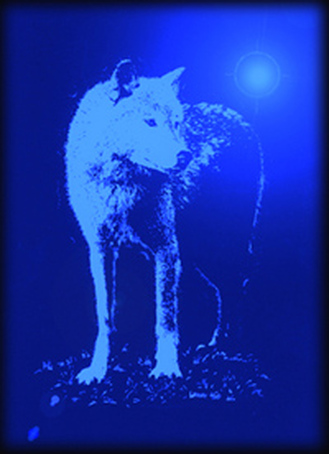 this image available on redbubble >> this image available on redbubble >>
La Loba sings the bones...
or also known as... La Loba Singing Over the Bones... There is an old woman who lives in a hidden place that everyone knows in their souls but few have ever seen. She calls herself by many names. In this desert she is called La Loba. The Wolf Woman. The sole work of La Loba is the collecting of bones. She collects and preserves especially that which is in danger of being lost to the world. Her specialty is wolves. She sifts through the mountains and riverbeds looking for wolf bones, and when she has assembled an entire skeleton and the creature is laid out before her, she sits by the fire and thinks about what song she will sing. And when she is sure, she stands over the creature, raises her arms over it, and sings out. That is when the rib bones and leg bones begin to flesh out and the creature becomes furred. La Loba sings some more, and more of the creature comes into being; its tail curls upward, shaggy and strong. And La Loba sings more and the wolf creature begins to breathe. And still La Loba sings so deeply that the floor of the desert shakes, and as she sings, the wolf opens its eyes, leaps up, and runs away down the canyon. Somewhere in its running, whether by the speed of its running, or by splashing its way into a river, or by way of a ray of sunlight or moonlight hitting it right in the side, the wolf is suddenly transformed into a laughing woman who runs free toward the horizon. So remember, if you wander the desert, and it is near sundown, and you are perhaps a little bit lost, and certainly tired, that you are lucky, for La Loba, the wolf woman may take a liking to you and show you something—something of the soul. • Excerpt from the classic book, Women Who Run with the Wolves by Clarissa Pinkola Estes
Video below... a beautiful short animation about La Loba, the Wolf Woman...Singing Over the Bones...
1 Comment
A story about the Healing Sacred Drum...The following creation myth from the Swedish part of Lapland shows how the caring heart pulses at the center of all existence... I truly cherish this beautiful story of the blessed reindeer myth and can't help but believe it is possibly one way of how pachamama, our earth mother and the sacred healing drum came to be known as a sacred partnership for one another... "The sacred reindeer drum" is very old... ancient... a heart-teaching as a gift given to all of us that we can journey deep within to our earth mother's core to be one with her heartbeat to find peace, healing and oneness with all... it is my hope that you enjoy this story as much as i have... brightest blessings, weaver (((o))) 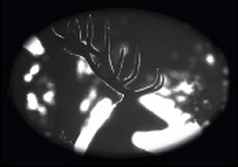
A Lapp Creation Story... Once, while walking in solitude by the eternal waters, the creator, Jubmel, found the peace shrieks of hated, and evil chants invaded the calm of the eternal void. Disturbed, Jubmel decided to create a new world, a universe so peaceful and harmonious that love and compassion would reign and the evil spirits would flee. He wanted the beautiful body of his favorite creature, a gentle reindeer doe, to be the matter from which the new world would be shaped, and he wanted her loving heart to inform the new creation. So he called the lovely vaja, the reindeer doe, from Passevaari, the holy mountain upon which she grazed. As the radiant reindeer came running, her golden hooves sparkled like shafts of sunlight, delighting the creator's heart. Turning to the gentle vaja, and looking into her tender eyes, Jubmel said: "You my little vaja, have infinite sadness in your eyes: and from your body I will shape the world to set my Savio-aimo (the home of holiness) apart from the nether regions." So the creator took a tiny bone from the body of the reindeer doe and built a bridge that spanned the abyss between the light world and the nether regions. The innermost structure of the new earth was fashioned from the vaja's bones and became the rocks and boulders and the peaks and mountain ridges. Her flesh became the fertile soil, and her blood and veins the flowing rivers. From her hair the mysterious forests were created. Her skull became the sky, which shields the earth from the blazing brightness of the holy heavens. The reindeer's deep, sad eyes became the morning and evening stars to guide the songmakers, the dreamers and the parted lovers and to give them hope. Finally, Jubmel hid the vaja's still-beating heart in the centermost depths of the earth to remind the lost wanderer, the lonely mountaineer, and all those in sorrow, that help would always be there. The vaja's heart would be the heartbeat for the earth, so that when peace and love reigned the reindeer doe's heart would beat with joy. But if hatred and greed disrupted the earth's harmony, her heart would convulse in pain and tremors would shake the earth from top to bottom. The beauty of the new earth was abundant. Sweet milk - the holy milk of the vaja - flowed forth from the rivers. The tree trunks were filled with marrow, and cheese-fruit and meat-fruit hung from the branches of the birch and the firs. Jubmel asked the sun to shine upon this wondrous creation, and the splendid world created from the body of the gentle reindeer doe was so warm and loving that the evil spirits would not approach it. 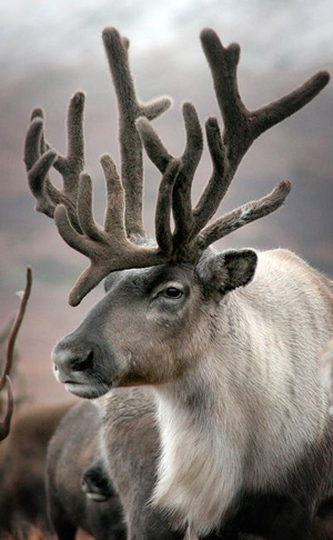
Delighted with the new world, Jubmel wanted to share his joy, so he decided to create beings of his own kind to rejoice on the earth. From a small, nameless substance, Jubmel shaped two men to be children of the earth and asked his son, Beijve, the sun god, to warm the earth and guard and love it.
In turn, Beijve asked the new beings to care for the earth and its gifts - the fleet-footed reindeer, the fruit-bearing trees, and all its wonderful treasures. The only commandment Jubmel gave them was not to hate. At first the brothers loved each other and dwelt upon the earth in peace. They sang with joy and gratitude while, deep in the earth, the reindeer doe's heart beat with love. Hearing the earthÕs glad music, Jubmel and Beijve smiled with holy joy. Jubmel had another son, Mano, who, after he rebelled against his father, had been cast out from Savio-aimo, the heavenly realm. When Mano saw the two beings living so peacefully, he wanted to make trouble. So, he whispered wicked words to one of the earth-brothers as was sleeping. From that moment on, this brother, Attjis, became restless and left home. The other brother, Njavvis, grieved at this loss. But he was comforted when he listened to the holy vaja's heartbeats deep in the earth. Filled with compassion for the abandoned Njavvis, the sun god, Beijve, shed a great tear. From this loving, tender tear of compassion and the sun god's gentle, joyous smile, Jubmel created the first woman to be a mate for Njavvis. From this couple, a race of happy, sun-bright people - the Samis - would be born. The first woman's eyes were the color of Jubmel's beloved and shyest flower, the sky-blue gentian, and held the mystery of love and life and hope. Her forehead was pure, high, and free. Her voice was sweet and as musical as the songbird, and her name was Njavvis-ene. Then Njavvis thanked Jubmel for creating such a wondrous woman. But as soon as Attjis heard her voice and saw his brother's beautiful soul mate, he craved her. Envy and bitterness over-whelmed Attjis, and he ceased listening to the guiding, loving heatbeats of the reindeer doe in the center of the earth. Then the evil Mano called forth his own daughter with black magic and chants and gave her to the envious Attjis as a mate. From then on, the envious Attjis was never satisfied with what he received, and he demanded from his generous brother, Njavvis, more and more land which in his greed he abused. Finally, Attjis became so possessed by evil spirits that he beat his brother to death with the head and antlers of a slain deer. In horror, Beijve withdrew the sun, and the reindeer doeÕs wounded heart throbbed so hard that the earth rocked violently and flung the wicked brother up to the moon. Meanwhile, children had been born to both couples, engendering a race of human beings in which evil increased. The humans found no joy in the peace and plenty that the creator had given through the body of the reindeer doe, and they began to take all the good things from the earth without thanksgiving. As a result of these cold-blooded acts, the heart of the creator's vaja, buried in earth's center, trembled with terror at so much wickedness, so that the upper earth quaked and many people fell into the chasms. Jubmel decided to reverse the world and to destroy this wicked race, and he turned the sea waters on the land so the greedy people would perish. Seeing all the suffering, Njavvis-ene, now a goddess in the heavens called Beijen-neite, entreated her father, the sun god, to help the dying earth people. In turn, he pleaded with Jubmel, who helped the last two humans, a boy and a girl, to survive by placing them asleep on the holy mountain of Passevaari. And Beijen-neite made the earth a beautiful place once more so the children would be greeted by birds, animals, and flowers when she awakened them with warm and loving kisses. The heart of humankind, Jubmel thought, is strange, for it sneers at godly gifts in times of joy and plenty. So, to save this peculiar race from itself and to part the light from the darkness, the creator hid all the marvelous treasures of the earth - gold and silver, milk and cheese-fruit - deep in the mid-earth, near the heart of the holy vaja. But he relented and allowed some of the rich milk to remain on earth, hiding it in the udder of the female reindeer. From then on, the new people, born later to the two remaining earth-children, had to wander to seek the gifts buried near the heart of the holy reindeer doe. They had to struggle to live from the earth, for the former riches had been hidden. In their sleep, they forgot how the world had been shaped form the body of the gentle reindeer doe. Nor did they know of the treasures hidden near her heart. So Beijen-neite returned to the earth to be near them. Sometimes she allowed herself to be seen, and sometimes she came in the form of a reindeer. She taught them the ways of goodness and humility, and how to tame the wild deer and to make clothes and shelter from it. 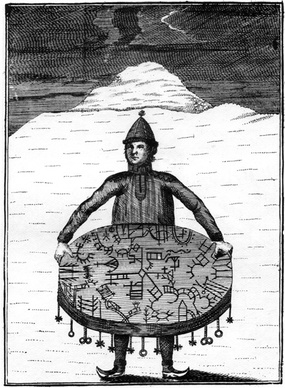 The Sami Reindeer People The Sami Reindeer People
Warmed by the loving care of the sun-mother, Beijen-neite, they became the Sami (Sameh) people who learned the tales of the hidden treasure from the songs of the shaman and who journey, searching for the peace and harmony that is safe-guarded by the heartbeat of the sacred reindeer doe.
To the beat of the magic drum, made of reindeer skin, the shamans still remind the people always to listen for the holy vaja's joyful heartbeats. For near her loving, throbbing heart, the treasures of creation are being saved for them. • Excerpt from the beautiful book, Creation's Heartbeat: Following the Reindeer Spirit by Linda Schierse Leonard |
i wish to acknowledge with gratitude that i live, work + play on the traditional and unceded territory of the Snuneymuxw First Nation...
my blog writings...i'm a creative soul choosing to walk softly on our blessed earth mother's back... more here... Spirit Art Frame Drum Available by weaver…
Click to view more >> categories
All
archives
August 2023
links• Healing Drum Quotes >>
|
• home • watercolours • greeting cards • poetry chapbook • music • calendar • contact • about •
copyright © 2006-2024 | carol weaver | proudly powered by weebly
"creating safe, sacred space for healing + creativity to begin..."
"creating safe, sacred space for healing + creativity to begin..."

